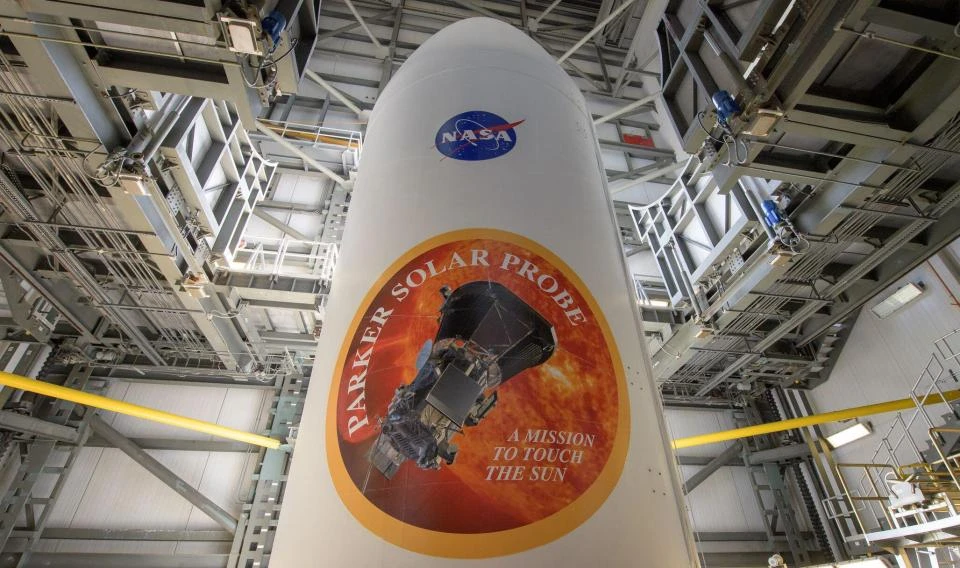nasa‘s Landmark 2024 Mission to ‘Touch the Sun’
NASA’s Parker Solar Probe is scheduled to make its closest-ever pass of the sun in 2024, serving as a monumental achievement deemed “equivalent to the first moon landing” by scientists. The probe, launched on August 12, 2018, is set to fly at an incredible speed of 435,000mph, coming within 3.8 million miles of the sun’s ‘surface’ on December 24, 2024, with the aim of obtaining the first-ever sample of a star. This mission marks a historic milestone in space exploration and is expected to yield groundbreaking discoveries about our closest star.
Unprecedented Proximity to The Sun
NASA’s Parker Solar Probe is positioned to soar more than seven times closer to the sun than any previous spacecraft, marking a pivotal leap in our understanding of solar dynamics. The project’s significance is underscored by Nour Raouafi, a key scientist on the mission, who likened the endeavor to “basically almost landing on a star” and equated its impact to the historic moon landing in 1969. The probe’s groundbreaking proximity to the sun holds promise for unlocking crucial insights about solar phenomena that have long eluded scientific understanding.
Unveiling the Mysteries of Solar Wind
The Parker Solar Probe aims to gather precise measurements and images, furnishing scientists with vital data to unravel the origins of solar wind and its dynamic evolution. Insight into solar wind holds significant implications for enhancing our ability to forecast changes in the space environment, which in turn can impact life and technology on earth. Solar wind, also referred to as coronal mass ejection, is instrumental in the formation of mesmerizing Aurora displays when it interacts with earth‘s magnetic field. However, these colossal clouds of charged solar particles have the potential to disrupt earth‘s satellite communication systems and radio signals, underscoring the critical importance of comprehending this natural phenomenon.
Forecasting Solar Weather to Safeguard earth
Dr. Nicky Fox, the head of science at NASA, emphasized the mission’s imperative role in deciphering the behavior of solar wind. The absence of certainty regarding the mission’s findings underscores the magnitude of this undertaking, with the potential to unveil new insights into the heating of solar wind. The probe is expected to detect diverse types of waves, shedding light on a blend of processes that have been subject to extensive debate within the scientific community. This knowledge will impart critical information for better informed decision-making on earth, particularly in anticipating and mitigating the impact of solar activity on our planet.
Mitigating the Impact of Solar Maxima
The mission assumes critical significance as the sun approaches the peak of its 11-year cycle, known as the solar maximum. As the sun progresses through the current stage of its cycle, marked as cycle 25, the frequency and potency of solar flares and coronal mass ejections intensify. The potential ramifications of a formidable solar wind event drawing the cautionary attention of NASA and international researchers, who have warned of the possibility of a global Internet blackout. A historical reference to the Carrington Event in 1859 underlines the conceivable impact of such an event, with the capacity to induce a worldwide blackout and inflict severe damage upon communication systems, potentially necessitating prolonged periods of offline operation for humanity.
Impending Risks and Global Precautions
As the prospect of a powerful solar wind event looms, the imperative for global preparedness and safeguards against the far-reaching repercussions becomes increasingly evident. The potential ramifications of a solar flare of significant magnitude could precipitate a pandemic-like Internet blackout with pervasive ramifications for global communications. The harrowing specter of a worldwide blackout and protracted disconnection from digital infrastructure underscores the urgency of advancing measures to fortify global resilience and contingency planning against such contingencies.
Concluding Thoughts
NASA’s upcoming 2024 mission to ‘touch the sun’ bears the hallmark of a watershed moment, echoing the monumental significance of the first moon landing. The pursuit of unparalleled proximity to the sun stands poised to unlock invaluable insights into solar wind and its enigmatic dynamics, equipping humanity with the knowledge to foresee and withstand the impacts of solar weather with far-reaching consequences for life and technology on our planet. As the countdown to this historic mission continues, the world awaits with bated breath for the potential revelations and transformative impact that may emerge from this audacious venture into the heart of our solar system.
Source: thesun








No Comments